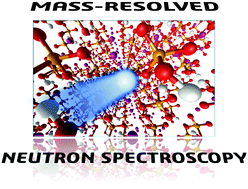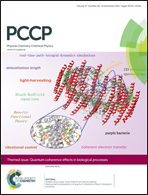Nuclear dynamics in the metastable phase of the solid acid caesium hydrogen sulfate†
Abstract
High-resolution spectroscopic measurements using thermal and epithermal neutrons and first-principles calculations within the framework of density-functional theory are used to investigate the nuclear dynamics of light and heavy species in the metastable phase of caesium hydrogen sulfate. Within the generalised-gradient approximation, extensive calculations show that both ‘standard’ and ‘hard’ formulations of the Perdew–Burke–Ernzerhof functional supplemented by Tkatchenko–Scheffler dispersion corrections provide an excellent description of the known structure, underlying vibrational density of states, and nuclear momentum distributions measured at 10 and 300 K. Encouraged by the agreement between experiment and computational predictions, we provide a quantitative appraisal of the quantum contributions to nuclear motions in this solid acid. From this analysis, we find that only the heavier caesium atoms reach the classical limit at room temperature. Contrary to naïve expectation, sulfur exhibits a more pronounced quantum character relative to classical predictions than the lighter oxygen atom. We interpret this hitherto unexplored nuclear quantum effect as arising from the tighter binding environment of this species in this technologically relevant material.


 Please wait while we load your content...
Please wait while we load your content...